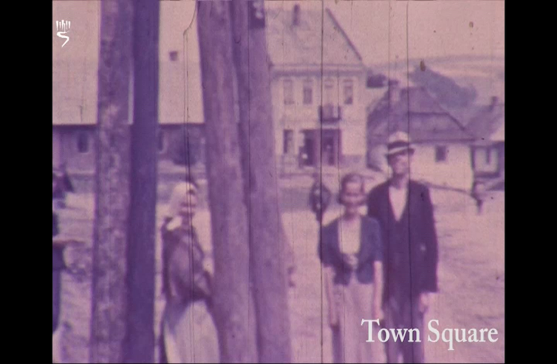Gefilmte Dokumente. Methoden zur Recherche von Holocaust-Filmen aus Archivbeständen
DOI:
https://doi.org/10.17892/app.2016.0002-3.85Schlagworte:
Polen, Niederlande, Nowe Miasto nad Pilicą, Płońsk, Będzin, Veendam, Franeker, Holocaust, Archivaufnahmen, Amateurfilmer, Propaganda, Privatfilme, Home Movies, ephemere Filme, jüdische Gemeinden, historische Quellen.Abstract
Holocaust-bezogene Archivfilme dokumentieren das jüdische Leben vor dem Krieg und das Schicksal der Juden während des Zweiten Weltkriegs und teilweise auch in der Nachkriegszeit. Diese Materialien – Propagandafilme, Amateurfilme, Dokumentarfilme – erfassen Ereignisse zum Zeitpunkt ihres Auftretens, sind daher eine unschätzbare historische Quelle und sollten als solche behandelt werden. Sie enthalten zahlreiche Informationsebenen, die untersucht werden müssen. Umfassende Forschung ist essentiell, um die Motivation und Ideologie der Person hinter der Kamera zu bestimmen, Orte und Ereignisse zu identifizieren, den geographischen Rahmen zu erfassen und in einigen Fällen sogar Situationen und Menschen zu identifizieren. Je mehr Informationen über einen Film verfügbar sind, desto wichtiger ist er als historisches Dokument. Dieser Artikel wird sich auf Arbeitsmethoden zur Erforschung von Archivmaterial konzentrieren und Beispiele solcher Forschungen untersuchen, die mit Filmen durchgeführt werden, die im Yad Vashem Filmarchiv katalogisiert sind.
Downloads
Veröffentlicht
Zitationsvorschlag
Ausgabe
Rubrik
Lizenz
Copyright (c) 2016 Apparatus. Film, Medien und digitale Kulturen in Mittel- und Osteuropa

Dieses Werk steht unter der Lizenz Creative Commons Namensnennung 4.0 International.
Die Beiträge in Apparatus sind unter https://creativecommons.org/licenses/by/4.0/ publiziert. Diese Lizenz kann nicht auf die zitierten Medien angewendet werden, diese unterliegen den Bedingungen der individuellen Nutzungsrechte.
Die Autor/innen besitzen uneingeschränktes Urheberrecht und verfügen ohne Vorbehalt über ihre Veröffentlichungsrechte.





